
One of the most mystifying things that can happen in your garden is when a plant gets a disease. How did it happen? Will it spread? Will all my plants die? How can I get rid of it? The most important thing to understand about disease prevention is something called the disease triangle (drawing, right). Disease can only happen when three things coincide: you have a plant that can get sick (a host), a pathogen (like a fungus, bacterium, or virus) that can attack the plant, and environmental conditions (like humidity or drought) that promote the disease. If any one of these things is not present, the disease will not happen, so prevention involves knocking out at least one side of the triangle. Rather than waiting for a problem to pop up in your garden, consider the best defense against disease to be a good offense. What follows are 10 ways you can eliminate at least one side of the disease triangle and keep your plants healthy.
1. Examine plants carefully before buying


The easiest way to limit disease in your garden is to avoid introducing it in the first place. Getting a disease with a new plant is not the kind of bonus that any of us wants. One of the hardest things to learn is what a healthy plant should look like, making it difficult to know if the one you want is sick.
It is a good idea to collect a few books, magazines, and catalogs that show what a healthy specimen looks like. Don’t take home a plant with dead spots, rotted stems, or insects. These problems can easily spread to your healthy plants and are sometimes hard to get rid of once established.
In addition to checking the tops of plants, always inspect the root quality. One does not often see customers doing this in a garden center, but it should be a common sight. Place your hand on the soil surface with the plant stem between your fingers. Gently invert the pot and shake the plant loose. You may have to tap the edge of the pot against a solid surface to loosen the roots from the pot. Roots should be firm, usually white, and spaced all over the root-ball. Dark or mushy roots are not a good sign. Even when the tops appear healthy, it’s just a matter of time before a rotted root system kills a plant.
2. Use fully composted yard waste
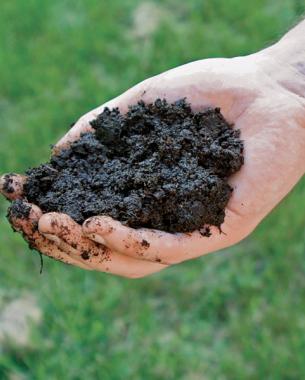
Not all materials in a compost pile decompose at the same rate. Some materials may have degraded sufficiently to be put in the garden, while others have not. Thorough composting generates high temperatures for extended lengths of time, which actually kill any pathogens in the material. Infected plant debris that has not undergone this process will reintroduce potential diseases into your garden. If you are not sure of the conditions of your compost pile, you should avoid using yard waste as mulch under sensitive plants and avoid including possibly infected debris in your pile.
3. Keep an eye on your bugs

Insect damage to plants is much more than cosmetic. Viruses and bacteria often can only enter a plant through some sort of opening, and bug damage provides that. Some insects actually act as a transport for viruses, spreading them from one plant to the next. Aphids are one of the most common carriers, and thrips spread impatiens necrotic spot virus, which has become a serious problem for commercial producers over the past 10 years. Aster yellows (photo, right) is a disease carried by leafhoppers and has a huge range of host plants. Insect attacks are another way to put a plant under stress, rendering it less likely to fend off disease.
4. Clean up in the fall


It is always best to clean out the garden in the fall, even if you live in a moderate climate. This is not only an effective deterrent to disease but also a good way to control diseases already in your garden.
5. Apply the correct fertilizer

You need to take care when fertilizing plants since too much of any fertilizer can burn roots, reducing their ability to absorb water. This, in turn, makes the plants more susceptible to stress from drought, cold, and heat. Plants starved for nutrients are smaller and can be badly affected by leaf spots, while a stronger plant can fight off diseases. An overabundance of a particular nutrient is another way to put stress on a plant.
Getting a soil test through your local extension agency will provide you with accurate information on nutrient levels in your soil. Without it, any feeding of your plants is likely to be guesswork on your part and may result in too much of one nutrient or not enough of another.
6. Plant disease-resistant varieties

Disease-resistant plants are those that might get sick with a particular problem but will fight off the disease instead of succumbing to it. For instance, some tomatoes are coded as “VFN resistant,” which means the tomato variety is resistant to the fungi Verticillium and Fusarium and to nematodes.
If you start looking for these codes on flowers, you’ll probably be disappointed because disease resistance is rarely identified on plant tags. This doesn’t mean that numerous flower varieties are not resistant to disease. Many rose companies offer plants that are resistant to diseases like powdery mildew and black spot.
Nursery employees and fellow gardeners can help you identify the best or most resistant varieties of many plants. Reference books and catalogs may also list plants and varieties resistant to particular diseases.
7. Prune damaged limbs at the right time

Trimming trees and shrubs in late winter is better than waiting until spring. Wounded limbs can become infected over the winter, allowing disease to become established when the plant is dormant. Late-winter pruning prevents disease from spreading to new growth. Although late-winter storms can cause new damage, it is still better to trim back a broken limb than ignore it until spring is underway. Always use sharp tools to make clean cuts that heal rapidly, and make sure to cut back to healthy, living tissue.
8. Choose and site plants appropriately


Successful gardening is based on using plants appropriate for your zone and site. If you set a shade-loving plant, like an azalea, in full sun, it will grow poorly and be easily attacked by diseases and insects. I once had a crape myrtle planted where part of its leaves were in the shade. This was the only part of the plant that had powdery mildew.
Plants have defenses similar to a human’s immune system, which swing into action when plants are under attack from an insect or disease. If plants are under stress, they cannot react with full strength to fight off or recover from diseases. Stressed plants, therefore, are more likely to succumb to these afflictions.
9. Water properly

Watering your garden is a good thing, but since many diseases need water just as much as plants do, how you go about it makes a big difference. Many pathogens in the soil and air need water to move, grow, and reproduce. To avoid giving these diseases an environment they love, choose watering methods that limit moisture on a plant’s foliage. Soaker hoses and drip irrigation accomplish this. If you are watering by hand, hold the leaves out of the way as you water the roots.
The most common leaf problems are exacerbated when leaves are wet, so overhead sprinkling is the least desirable option. If you choose this method, however, water at a time when the leaves will dry quickly but the roots still have time to absorb the moisture before it evaporates.
Also remember that more isn’t necessarily better when giving your plants a drink. Waterlogged soil or pots promotes some root-rotting fungi and can also suffocate roots, making them easy targets for the rotting fungi.
10. Don’t crowd plants


Take care when spacing transplants, and keep an eye on established plants as they spread. Crowded plants create their own humidity, which allows diseases like powdery mildew (photo, right), rust, and downy mildew to thrive. Improving airflow around your plants reduces this high relative humidity and allows foliage to dry more quickly.
Plants that are placed too closely together tend to grow poorly due to competition for light, water, and nutrients. These weak plants are more susceptible to attack. Diseases also sometimes spread when an infected leaf comes into contact with a healthy one, which is more likely when plants are next to each other.
To lessen the likelihood of disease, trim out crowded, damaged, or old stalks on plants that are prone to powdery mildew, like Phlox paniculata. Dividing or rearranging your plants when they need it will also help.

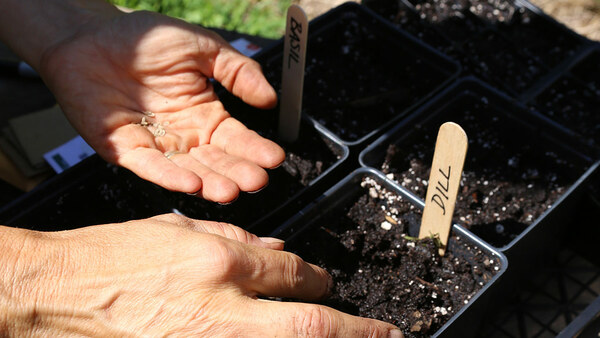
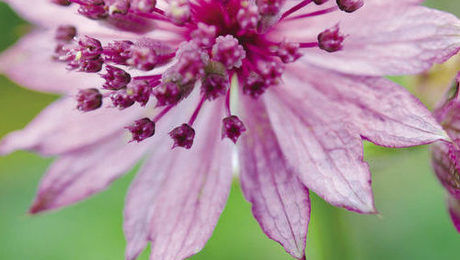

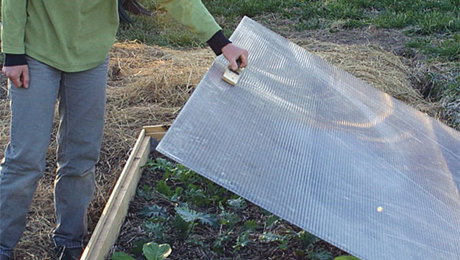

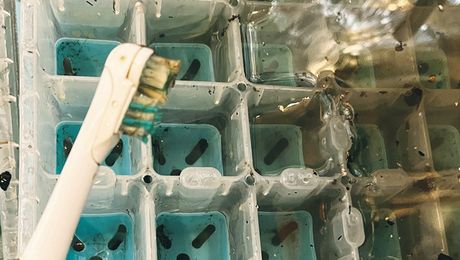










Comments
What are the basic gardening items you need?
Dirt, seeds, water
HELLO
Aerostylic Aeroponics Grow & Go campaign on indiegogo by Seed Volage Tech called Aerostylic, the luxury aeroponic system to grow plants indoor at home for 60% off retail, pre-order for $560. We hope you are interested. Thank-you.
https://www.indiegogo.com/project/preview/63bae939#/
Awesome tips.
I basically make approximately 6,000-8,000 dollars monthly with an online job. If you are willing to work simple freelance work for 2-5 hours /day from your home and earn valuable profit for doing it... Then this opportunity is for you... http://ur1.ca/p7vwh
gdxfdxfds
Aerostylic Aeroponics Grow & Go campaign on indiegogo by Seed Volage Tech called Aerostylic, the luxury aeroponic system to grow plants indoor at home for 60% off retail, pre-order for $560. We hope you are interested. Thank-you.
https://www.indiegogo.com/project/preview/63bae939#/
I recommend this site
The-GreenExpert.com
{Hello .. I am the green expert and I will be your agricultural advisor .. I will help you solve your agricultural problems and diagnose diseases that affect your plants ... All you have to do is choose a plant and locate the injured part and then choose the form of injury from the images available to go to the available information about the disease.}
Fantastic guide ! These fine tips are something new to try .
I am really impressed with this blog and enjoyed reading it .
If you want learn something more regarding flower gardening ,You may go through below blog:
https://www.flowersnfruits.com/blog/how-to-start-and-maintain-your-own-flower-garden-2/
google
Fine gardening is the BEST BLOG in the subject of gardening, I read it practically every day. I am also happy that I was able to find https://bit.ly/3fySXue because thanks to this I can take care of my health using natural methods. Now I know exactly what plants have health benefits!
My spouse is an arborist so you might say a green thumb runs in the family! Thanks for these blogs! They are just full of great tips for caring for our greenery!
Wow, great post I really like your information and will try to use in future. I would love to do gardening but we don't have any garden on our house, I remember in my school time I wrote an article on my garden. Now I take help from edubirdie regarding my writing stuff, because I was good in writing only in my school time.
Thank you for sharing this informative content.Here I also want to share about Go saveshop where you can get high quality product with latest features like wireless charger for car https://www.gosaveshop.com/shop/mobile-accessories/mobile-phone-chargers/ . Mobile phone chargers are comes up with different design and features here at gosa veshop you will find everything that you want.
Fashion has become compulsory in this revolutionized world in which the best products are Jewelry Watches. As well at gosaveshop you will find all the home accessories like https://www.gosaveshop.com/shop/home-kitchen/vacuum-cleaners/ and many other that you want
thank you for sharing i also want ot share about https://www.aaronsmithphd.com who is an author and international speaker and always comes up with new ideas
https://www.marcopolosydney.com.au/
https://www.gosaveshop.com/product/167-long-battery-life-earbuds-earphone/
https://indigoindian.co.uk
https://navneetfamilycoach.com
I just bought 41 seeds of Red Roselle for my garden. And this article is a perfect guide.
Lawn Care
Nice article and helpful information! landscaping sault ste marie
Thanks for sharing this post with us! I have been working as a senior advisor at this https://lesbi.land/ website and help people with finding different topics.
These fine tips are something new to try .
I am really impressed with this blog and enjoyed reading it . | Tampa Concrete Contractors
I just read your article about 10 ways to keep a garden healthy and it really resonated with me. I am not an expert on plants but have always found them fascinating. I'm a trying hard landscape gardener lol. I look forward to reading more of your articles in the near future!
I really liked the article. Author, thank you very much. I look forward to your next articles. Best regards, Gvibe.
Log in or create an account to post a comment.
Sign up Log in